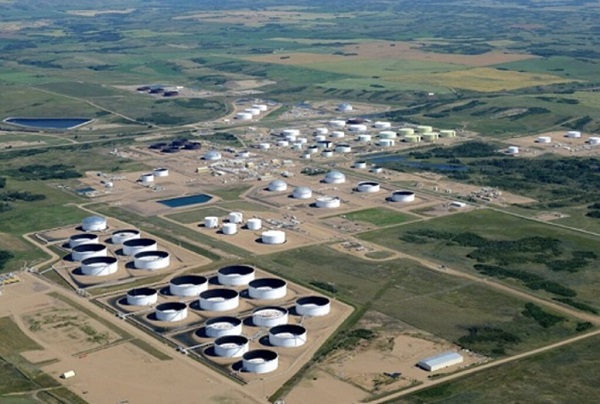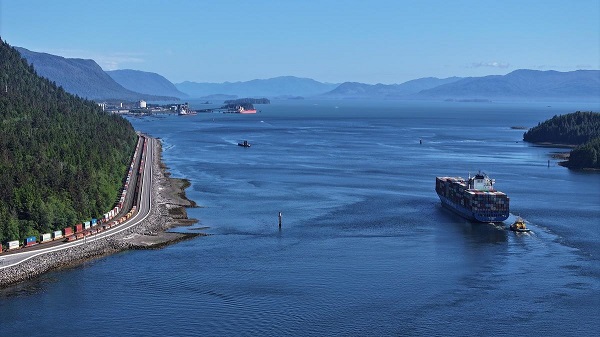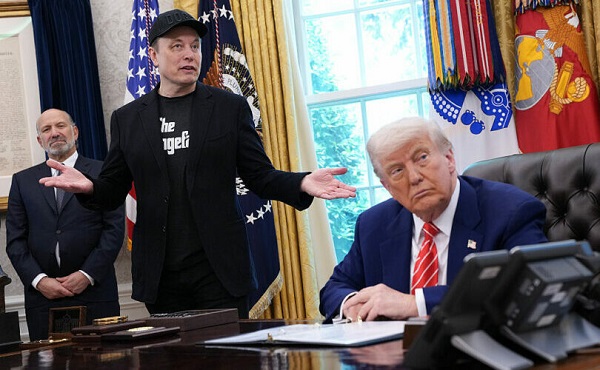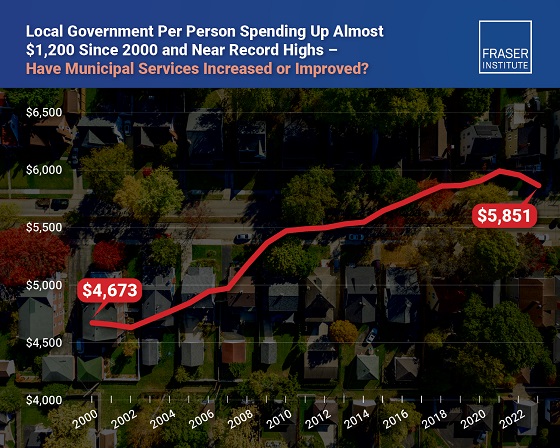Business
Ongoing water crisis is a national embarrassment

From the MacDonald Laurier Institute
By Matthew Cameron and Ken Coates
Cameron and Coates call for an increased sense of urgency from government and offer several policy initiatives to improve water access for First Nations communities.
Access to clean drinking water is a necessity, yet delivering it to all 40 million Canadians, particularly Indigenous communities, has proven to be elusive. Successive federal governments have both acknowledged the problem, yet have failed to fully eradicate drinking water advisories, which remain in place in at least 27 Indigenous communities.
In a new paper, The water conundrum and Indigenous communities in Canada, Matthew Cameron and Indigenous Program Director Ken Coates shed light on the water insecurity crisis on Canada’s reservations and recommend a number of multijurisdictional policy initiatives, urging policymakers adopt an increased sense of urgency in systematically address the problem – not just throwing money at it.
The authors identify several key barriers to resolving the water insecurity crisis:
- Community location: some communities are located too far away from freshwater reserves; many of these places were settled in the 1950s and 1960s, without scientific study of the suitability of their locations for water purposes;
- Long-term maintenance: trained personnel often work in stressful conditions with little or no local backup, making it difficult to find and retain these workers;
- Little margin for error: nationally determined Canadian water quality standards are, appropriately, difficult to meet, setting a high bar for small, isolated communities;,
- Poor national understanding of the challenges: Canadians who live off reservation are largely unaware of the urgency of the crisis in Indigenous communities.
Cameron and Coates recommend the following policy initiatives to address the crisis:
- Continuous transparency; authorities should make information about water delivery systems and water treatment facility down-times available to the public;
- Region-wide water management systems: these would provide for a sharing of personnel, professional backup, and collective learning about water systems maintenance and treatment facilities, thereby creating a maintenance economy;
- Option of relocation: in extreme cases, where water supplies are unacceptable and alternatives too expensive, communities could be given the option of voluntary relocation and rebuilding in a location with better access to potable water;
- More attention to remote solutions: giving agency to local Indigenous governments and/or companies to resolve the crisis;
- Increasing urgency: Indigenous Canadians wonder if the country cares or even knows about their lack of access to clean water– greater awareness among Canadians can push politicians to seek policy alternatives.
“Understanding the challenges in full, handling emergencies expeditiously, developing and implementing long-term solutions, and committing publicly to providing First Nations with adequate and appropriate water supplies is not an act of generosity or an optional exercise. Maintaining safe drinking water is a foundational responsibility of government,” conclude Cameron and Coates.
“Further delays should not be acceptable.”
To learn more, read the full paper here:
Matthew Cameron is a Yukon-based researcher and academic. He is an Instructor at Yukon University, where he has taught in the Liberal Arts, Indigenous Governance and Multimedia and Communications programs since 2016.
Ken Coates is a Distinguished Fellow and Director of Indigenous Affairs at the Macdonald-Laurier Institute and a Professor of Indigenous Governance at Yukon University.
Alberta
Pierre Poilievre – Per Capita, Hardisty, Alberta Is the Most Important Little Town In Canada

From Pierre Poilievre
Business
Why it’s time to repeal the oil tanker ban on B.C.’s north coast

The Port of Prince Rupert on the north coast of British Columbia. Photo courtesy Prince Rupert Port Authority
From the Canadian Energy Centre
By Will Gibson
Moratorium does little to improve marine safety while sending the wrong message to energy investors
In 2019, Martha Hall Findlay, then-CEO of the Canada West Foundation, penned a strongly worded op-ed in the Globe and Mail calling the federal ban of oil tankers on B.C.’s northern coast “un-Canadian.”
Six years later, her opinion hasn’t changed.
“It was bad legislation and the government should get rid of it,” said Hall Findlay, now director of the University of Calgary’s School of Public Policy.
The moratorium, known as Bill C-48, banned vessels carrying more than 12,500 tonnes of oil from accessing northern B.C. ports.
Targeting products from one sector in one area does little to achieve the goal of overall improved marine transport safety, she said.
“There are risks associated with any kind of transportation with any goods, and not all of them are with oil tankers. All that singling out one part of one coast did was prevent more oil and gas from being produced that could be shipped off that coast,” she said.
Hall Findlay is a former Liberal MP who served as Suncor Energy’s chief sustainability officer before taking on her role at the University of Calgary.
She sees an opportunity to remove the tanker moratorium in light of changing attitudes about resource development across Canada and a new federal government that has publicly committed to delivering nation-building energy projects.
“There’s a greater recognition in large portions of the public across the country, not just Alberta and Saskatchewan, that Canada is too dependent on the United States as the only customer for our energy products,” she said.
“There are better alternatives to C-48, such as setting aside what are called Particularly Sensitive Sea Areas, which have been established in areas such as the Great Barrier Reef and the Galapagos Islands.”
The Business Council of British Columbia, which represents more than 200 companies, post-secondary institutions and industry associations, echoes Hall Findlay’s call for the tanker ban to be repealed.
“Comparable shipments face no such restrictions on the East Coast,” said Denise Mullen, the council’s director of environment, sustainability and Indigenous relations.
“This unfair treatment reinforces Canada’s over-reliance on the U.S. market, where Canadian oil is sold at a discount, by restricting access to Asia-Pacific markets.
“This results in billions in lost government revenues and reduced private investment at a time when our economy can least afford it.”
The ban on tanker traffic specifically in northern B.C. doesn’t make sense given Canada already has strong marine safety regulations in place, Mullen said.
Notably, completion of the Trans Mountain Pipeline expansion in 2024 also doubled marine spill response capacity on Canada’s West Coast. A $170 million investment added new equipment, personnel and response bases in the Salish Sea.
“The [C-48] moratorium adds little real protection while sending a damaging message to global investors,” she said.
“This undermines the confidence needed for long-term investment in critical trade-enabling infrastructure.”
Indigenous Resource Network executive director John Desjarlais senses there’s an openness to revisiting the issue for Indigenous communities.
“Sentiment has changed and evolved in the past six years,” he said.
“There are still concerns and trust that needs to be built. But there’s also a recognition that in addition to environmental impacts, [there are] consequences of not doing it in terms of an economic impact as well as the cascading socio-economic impacts.”
The ban effectively killed the proposed $16-billion Eagle Spirit project, an Indigenous-led pipeline that would have shipped oil from northern Alberta to a tidewater export terminal at Prince Rupert, B.C.
“When you have Indigenous participants who want to advance these projects, the moratorium needs to be revisited,” Desjarlais said.
He notes that in the six years since the tanker ban went into effect, there are growing partnerships between B.C. First Nations and the energy industry, including the Haisla Nation’s Cedar LNG project and the Nisga’a Nation’s Ksi Lisims LNG project.
This has deepened the trust that projects can mitigate risks while providing economic reconciliation and benefits to communities, Dejarlais said.
“Industry has come leaps and bounds in terms of working with First Nations,” he said.
“They are treating the rights of the communities they work with appropriately in terms of project risk and returns.”
Hall Findlay is cautiously optimistic that the tanker ban will be replaced by more appropriate legislation.
“I’m hoping that we see the revival of a federal government that brings pragmatism to governing the country,” she said.
“Repealing C-48 would be a sign of that happening.”
-

 Crime2 days ago
Crime2 days agoNational Health Care Fraud Takedown Results in 324 Defendants Charged in Connection with Over $14.6 Billion in Alleged Fraud
-

 Health2 days ago
Health2 days agoRFK Jr. Unloads Disturbing Vaccine Secrets on Tucker—And Surprises Everyone on Trump
-

 Business1 day ago
Business1 day agoElon Musk slams Trump’s ‘Big Beautiful Bill,’ calls for new political party
-

 Censorship Industrial Complex1 day ago
Censorship Industrial Complex1 day agoGlobal media alliance colluded with foreign nations to crush free speech in America: House report
-

 International21 hours ago
International21 hours agoCBS settles with Trump over doctored 60 Minutes Harris interview
-

 Business14 hours ago
Business14 hours agoLatest shakedown attempt by Canada Post underscores need for privatization
-

 Business13 hours ago
Business13 hours agoWhy it’s time to repeal the oil tanker ban on B.C.’s north coast
-

 Alberta13 hours ago
Alberta13 hours agoPierre Poilievre – Per Capita, Hardisty, Alberta Is the Most Important Little Town In Canada







